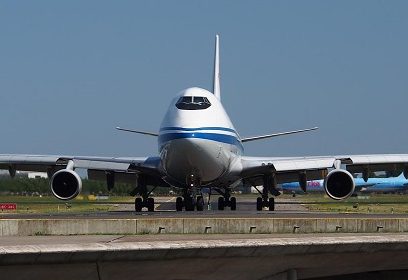A joint venture between China and Russia appears to be faltering amid disagreements between the two superpowers over how profits from the venture will be shared as well as any possible involvement of western companies in the project.
According to sources, troubles began when China indicated it wanted to bring Western companies in to handle specific aspects of the $50 billion project. Russia is strictly opposed to the involvement of Western companies.
However according to a source, “One of the key reasons is that Beijing hopes the CR-929 passenger jet will meet Western airworthiness standards. The wide-bodied jet is designed to fly to the United States and Europe, so it would be better to choose some key components by sharing some orders with European and American manufacturers.”
Reportedly, Beijing would prefer to use American or German undercarriages for the plane, however Russia is insistent it must be a Russian undercarriage. China maintains the Russian undercarriage has a poor safety record, and that could impact the ability of the plane to meet Western airworthiness standards.
The source continued, “The Russia side regards Beijing’s choice to use Western components as showing a white flag to the West amid global sanctions following Russia’s invasion of Ukraine.”
The joint project, the CR929-600, is a planned long-range, 280-seat passenger jet. Launched in 2017, the two nations had hoped it would challenge Boeing in the US and Airbus in Europe.
Meanwhile there have been disputes over the sharing of profits. China is indicating it wants 100% of the profits of sales made in China, while allowing Russia to take 70% of profits in the rest of the world. However due to the size of the Chinese market, and the fact the plane would likely dominate it, compared to the uncertainty of Western nations purchasing a Russian product given the geopolitical situation, Russia sees this as an overt attempt to defraud it of profits.
The source added, “It’s predicted that the Chinese market alone will require more than 3,000 widebody aircraft in the future, ensuring Boeing and Airbus’s current market shares remain unchanged. Moscow realized that outside China, it’s very hard for the CR929 to grab potential customers from competitors like Boeing and Airbus.”
Russian media reports are suggesting that Russia is considering withdrawing from the project altogether.
Vice-premier Yuri Borisov had told the country’s Engineers of the Future forum, “We are working with China on this project which, in principle, is not going in the direction that suits us. China, as it becomes an industrial giant, is less and less interested in our services. Our participation is decreasing and decreasing. I don’t want to predict the future of this project, if we are going to leave it or not, but for now this is really the way.”
While the maiden flight of the plane is scheduled for next year, reportedly Russia is behind schedule on manufacturing the wings, due to a lack of capital.
The engine is still under development and Russia wants to contribute to this aspect of the project, however China is reportedly looking to bring in a Western firm such as Rolls Royce or General Electric.
Eagle Yin, a research fellow at the China Foundation for International and Strategic Studies in Beijing, said China is trying to walk a tightrope, maintaining close ties with Russia as a hedge against Western hegemony, while still building closer ties with the West in the aftermath of Russia’s invasion of Ukraine.
Yin said, “Compared with US hostility toward China, European countries might be easier to deal with, because the whole of Europe is facing a common political crisis in the aftermath of the Ukraine war.”
“Still, there are still a lot of challenges ahead, especially bilateral ties between China and the US. All efforts can only move forward if Xi [Jinping] and his US counterpart Joe Biden make some new agreement in their upcoming phone call.”

